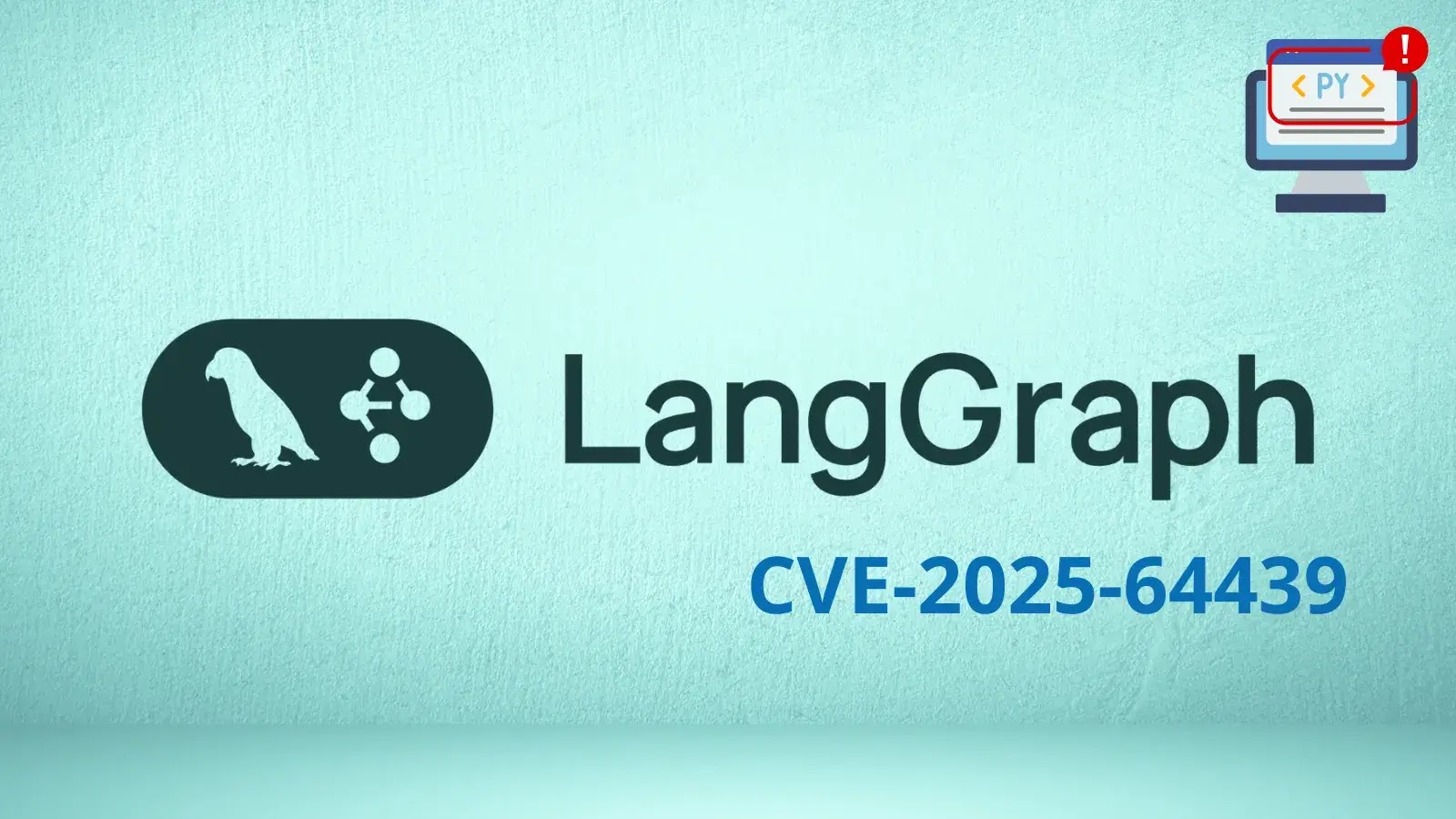
LangGraph Vulnerability Allows Malicious Python Code Execution During Deserialization
A chilling discovery has recently rocked the LangGraph ecosystem, revealing a critical remote code execution (RCE) vulnerability that could leave applications exposed to malicious actors. This flaw, tracked as CVE-2025-64439, allows for arbitrary Python code execution when untrusted data undergoes deserialization within LangGraph’s checkpoint system. For developers and security professionals leveraging LangGraph, understanding this vulnerability and implementing timely remediation is paramount to safeguarding their applications.
Understanding the LangGraph Deserialization Vulnerability (CVE-2025-64439)
The core of this vulnerability lies within LangGraph’s default serialization protocol, the JsonPlusSerializer, specifically in versions of langgraph-checkpoint prior to 3.0. When this serializer processes untrusted input, it can be tricked into executing malicious Python code. Deserialization vulnerabilities are particularly dangerous because they exploit the process of reconstructing data objects from a serialized format. If an attacker can inject malicious code into this serialized data, the application will then execute that code when deserializing it.
This particular flaw, CVE-2025-64439, represents a severe threat. Imagine a scenario where an attacker crafts a malicious payload disguised as legitimate checkpoint data. If a LangGraph application attempts to load this “checkpoint” using the vulnerable JsonPlusSerializer, the embedded malicious Python code would be executed with the privileges of the application. This could lead to a complete compromise of the system, data exfiltration, or further attacks on connected infrastructure.
Impact of Remote Code Execution (RCE)
Remote Code Execution (RCE) is considered one of the most critical classes of vulnerabilities. Its potential impact is broad and severe:
- System Compromise: Attackers can gain full control over the affected system, installing backdoors, creating new user accounts, or modifying configurations.
- Data Breach: Sensitive data stored on the system, including user credentials, proprietary information, and personal data, can be accessed, stolen, or destroyed.
- Denial of Service: Attackers can disrupt the availability of the application or underlying infrastructure, leading to operational outages.
- Lateral Movement: A compromised application can serve as a jumping-off point for attackers to move deeper into an organization’s network.
Given LangGraph’s role in orchestrating complex, stateful applications, an RCE vulnerability within its checkpointing mechanism is particularly concerning. Checkpoints often store critical application state, and compromising this process could allow attackers to manipulate application logic or sensitive data flows.
Remediation Actions
Immediate action is required to mitigate the risk posed by CVE-2025-64439. The primary remediation strategy involves updating your LangGraph dependencies.
- Upgrade
langgraph-checkpoint: The most crucial step is to upgrade yourlanggraph-checkpointpackage to version 3.0 or higher. This version contains the patch for the vulnerability. Ensure all your LangGraph projects are using the updated package. - Input Validation and Sanitization: While upgrading is paramount, it’s always good practice to implement robust input validation and sanitization for any data being deserialized. Never trust input from external sources.
- Least Privilege Principle: Run your LangGraph applications with the fewest necessary privileges. In the event of a successful exploitation, this can limit the damage an attacker can inflict.
- Network Segmentation: Isolate LangGraph applications from critical backend systems where possible. This can help contain the blast radius if a compromise occurs.
- Security Audits: Regularly audit your code and dependencies for known vulnerabilities. Integrate security scanning into your CI/CD pipelines.
Tools for Detection and Mitigation
Leveraging appropriate tools can aid in both detecting vulnerable dependencies and securing your applications:
| Tool Name | Purpose | Link |
|---|---|---|
| Black Duck by Synopsys | Software Composition Analysis (SCA) to identify known vulnerabilities in open-source components. | https://www.synopsys.com/software-integrity/products/software-composition-analysis/black-duck.html |
| Snyk Open Source | Developer-first security for finding and fixing vulnerabilities in open-source dependencies. | https://snyk.io/product/open-source-security/ |
| Dependabot | Automated dependency updates for GitHub repositories, including security alerts for vulnerabilities. | https://github.com/dependabot |
| OWASP Dependency-Check | Identifies project dependencies and checks if there are any known, publicly disclosed vulnerabilities. | https://owasp.org/www-project-dependency-check/ |
| Trivy | Comprehensive vulnerability scanner for containers, filesystems, and Git repositories. | https://aquasec.com/products/trivy/ |
Conclusion
The discovery of CVE-2025-64439 in LangGraph’s checkpoint serialization system highlights the persistent threat of deserialization vulnerabilities. This critical remote code execution flaw underscores the importance of vigilant dependency management and secure coding practices. By upgrading langgraph-checkpoint to version 3.0 or higher, implementing robust input validation, and adopting a defense-in-depth security approach, organizations can effectively mitigate the risks associated with this vulnerability and protect their LangGraph-powered applications from potential compromise. Proactive security measures are not merely a recommendation; they are a necessity in today’s dynamic threat landscape.





